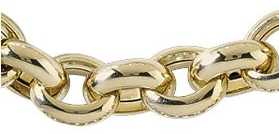A year ago I was an unsuccessful political blogger, entertaining myself and almost no one else. Now, I’m a wine blogger doing largely the same thing, except that no one calls me a Nazi in comments anymore. Though my wine blog’s audience is only a tenth the size of my failed political blog’s audience, I’m informed by people-who-know that I am on the cusp of great success.
There’s no way to sugar coat this: wine blogging is failing its readers.
The evidence for that failure: with very few exceptions, wine blogs don’t even have readers.
 The baseline numbers are appalling. Using traffic data aggregated by Cellarer and traffic rankings provided by Truth Laid Bear, the top 100 wine blogs combined would be the 280th most popular blog in the country.
The baseline numbers are appalling. Using traffic data aggregated by Cellarer and traffic rankings provided by Truth Laid Bear, the top 100 wine blogs combined would be the 280th most popular blog in the country.
Even looking at wine blogging as a niche product, we’re a disaster. There are 40 million regular wine drinkers in the United States, and the aggregate audience for wine blogs is maybe a couple hundred thousand people. Cellarer estimates, based on Google data, that the top 100 wine blogs enjoy monthly traffic of 865,000 unique visits, which means an average of 30,000 visits a day. Assuming that people who visit wine blogs visit more than one, even within our self-declared niche, we’re reaching less than 0.5% of our target audience.
There are, certainly, a lot of reasons for this. Wine lacks the daily drum beat of ginned-up controversy that powers political blogs. We don’t benefit from an endless stream of celebrity gossip or user-produced entertainment content that powers sites like Perez Hilton or Boing Boing. The audience that is interested in reading about wine is surely a fraction of the audience that drinks wine.
But still, it’s clear that we could do better. To that end, I suggest a two-step program to make wine blogs relevant to wine drinkers:
1) Stop reviewing wine
Most wine blogs are nothing but wine reviews, everyone a Parker wannabe describing last night’s bottle. This is a recipe for insignificance. Face facts: no one reads wine reviews for entertainment. Try to read all the way through the wine reviews in the back of Wine Spectator sometime; you can’t do it. After about a page-and-a-half, I personally am ready to machine-gun the fruit section of my local supermarket to put all the red fruit and citrus aromas out of their misery.
Wine reviews are a reference tool; they have value only en masse. No individual wine blog can hope to build a database of reviews to compete as a destination with Wine Spectator, eRobertParker.com, or Cellar Tracker. Bloggers banking on their reviews are positioning themselves not as a regular read, but as Google fodder, which means the majority of their readers are going to arrive at random and leave with no real inclination to return.
There is much more to wine than taste descriptors. As everyone knows who has ever hung around a tasting after the notebooks are tucked away, wine is a conversation. People who are interested in wine are interested in its personalities, history, lore, science, and economics. The best people to drink wine with are not the ones with the most taste buds on their tongues, they’re the ones who tell the stories, who know the background, who understand the context. That’s what wine blogs need to do more of – and what the best wine blogs already do.
Which brings us to point two of my two-point plan:
2) Wine blogs need to use the medium in which they operate to build a conversation.
As I mentioned, I came out of political blogs, where a loud mixture of ideas and invectives flies freely. The first thing I noticed when I started wine blogging is how quiet it is. My impression was that wine bloggers post infrequently, and interact almost not at all. To test that impression, I did a quick and dirty survey of wine and political blogs, using Tehnorati’s peculiar list of sites and counting links, and discovered that political blogs are nine times more likely to link to other blogs than are wine blogs.
That’s an amazing statistic, so amazing it seemed incredible to me. So, in preparation for this article, I re-did the math, this time focusing on a traffic-centered list of the Top 10 wine blogs. While the difference between the linking patterns of wine and political blogs shrank, the overall difference remained.
 Imprecise though my surveys were, they indicate that wine bloggers in general are failing to use the defining characteristic of the worldwide web: the ability to link. Significantly, the difference between the first and second surveys indicated that more successful wine writers tend to link to other blogs more often than the less-trafficked wine writers. The inescapable conclusion: linking and attracting an audience go together.
Imprecise though my surveys were, they indicate that wine bloggers in general are failing to use the defining characteristic of the worldwide web: the ability to link. Significantly, the difference between the first and second surveys indicated that more successful wine writers tend to link to other blogs more often than the less-trafficked wine writers. The inescapable conclusion: linking and attracting an audience go together.
I think many wine bloggers may believe linking is somehow “cheating,” but in fact it’s a good way to deliver value to the reader. The web is theoretically infinite; readers value blogs that sort through the confusion to find things of interest. Some of the highest-traffic blogs provide nothing but links. Readers seek out and bookmark bloggers whose sensibilities and tastes mirror their own. They visit that blog regularly not only to see what the blogger has to say, but to see what the blogger has found on the web. The classic of the genre is Matt Drudge, arguably the most powerful force in modern media—and a generator of almost no original content.
The conversation empowered by linking is more vibrant and interesting than an endless monologue of review and personal impression. An energetic give and take creates a marketplace, and competition in that marketplace requires everyone involved to raise their game or risk being left behind. That gives readers more of what they want: real information, background, and insight. And it should be noted that it also invites a certain amount of conflict, which in any entertainment medium is a very good thing.
Finally, there’s this: interlinking wine blogs will do wonders for the average blogger’s traffic. The success of a good posting on one blog can help build the traffic on a dozen other blogs. The leveraging of content will add depth to all of our offerings, and the new and improved linking culture will reward the outstanding and inspire the rest. That will draw and hold readers, who will arrive not to find a data point on a single obscure wine, but to join the conversation after being introduced by a blog they already read and trust. That increases the odds that a new visitor will become a repeat visitor.
By providing readers with more of what they’re looking for, we can put wine blogging in a virtuous cycle of growth. Eventually we might start to have the kind of impact within the wine business that political blogs have had in Washington.
Or we can keep doing what we’re already doing, which is taking time between our meaningful but increasingly sparse posts to wonder if maybe there’s something better we should be doing with our time.
 Tom Johnson is a writer and business planning consultant living in Louisville, Kentucky. He operates the blog Louisville Juice, which will soon—for no good reason—change its name.
Tom Johnson is a writer and business planning consultant living in Louisville, Kentucky. He operates the blog Louisville Juice, which will soon—for no good reason—change its name.
